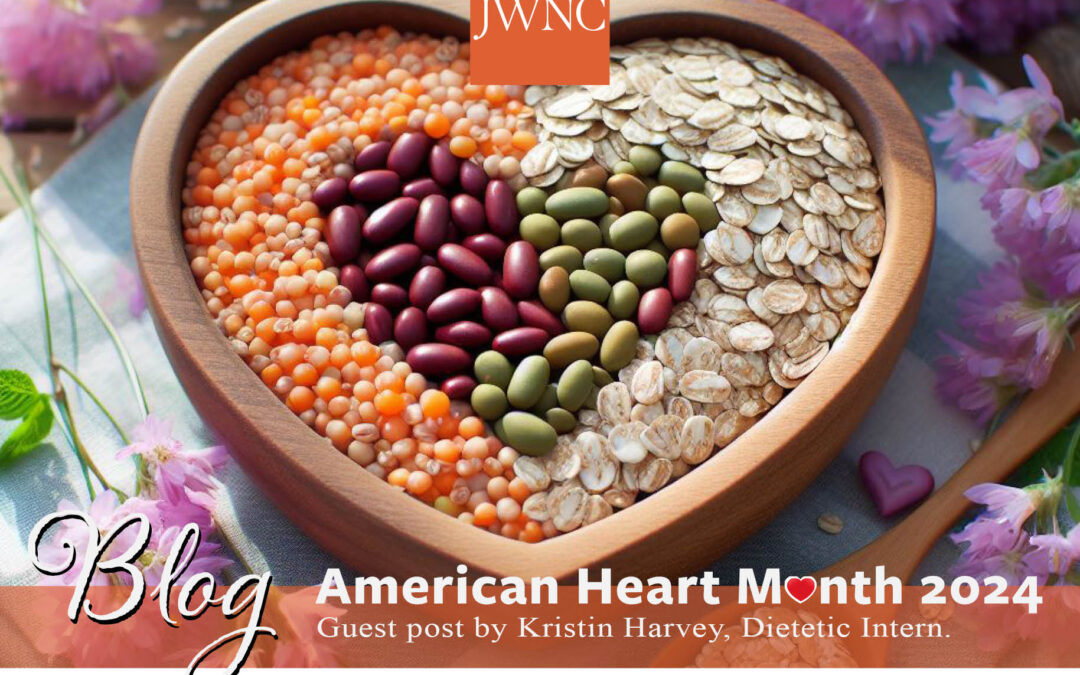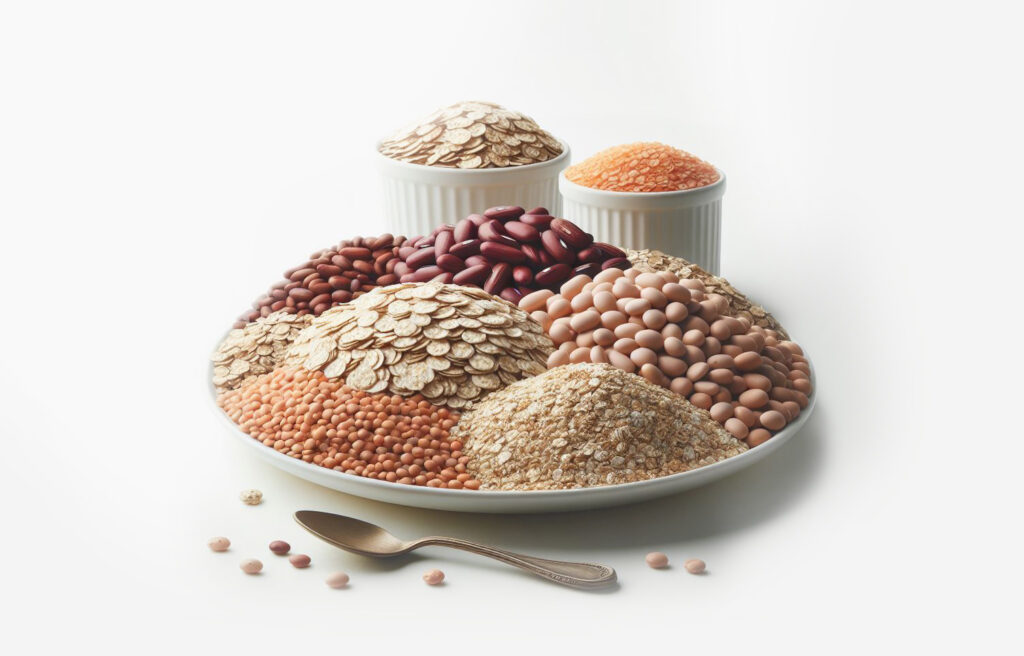
American Heart Month 2024 – Guest post from Kristin Harvey, Dietetic Intern.
As some of us may know, February is a month dedicated to American Heart Month. During February we are encouraged to focus and expand our knowledge on cardiovascular health. It is a reminder that you have the power to help keep your heart healthy and protect yourself against heart disease! We can do this through small heart-healthy actions like adding some joyful movement to your day or choosing colorful foods to build your plate.
What exactly is heart disease anyways? That is a great question! “Heart disease” is a term used to refer to multiple types of heart conditions. Examples of heart disease are coronary artery disease or heart failure. Medical professionals often encourage individuals to practice healthy habits to protect #ourhearts. Of these healthy habits, practicing a heart healthy diet is prominent.
“Soluble fiber helps to improve blood cholesterol levels which in turn can decrease the risk of developing heart disease
Great news! We do not need to restrict our diet to make it ‘heart healthy’. Instead, we can substitute healthy options that are enjoyable and satisfying. Making vegetables, fruit and whole grains the focus of your diet will help point you in the right direction. Why does a heart-healthy diet focus on whole grains? This is because many whole grains are a good source of dietary fiber. There are two types of fiber: soluble and insoluble.

Soluble fiber is known to aid in the digestion process, balancing blood sugar levels and lowering cholesterol levels, while insoluble fiber helps to soften stool, making it easier to pass. Soluble fiber helps to improve blood cholesterol levels which in turn can decrease the risk of developing heart disease. Soluble fiber does this by becoming a thick gel in our intestines that slows down the rate of digestion. While this keeps blood sugar from spiking, it also traps bile which is then excreted through your digestive system. Since cholesterol is used to make bile, this leads to decreased cholesterol. Sources of soluble fiber include:
-
Oatmeal
-
Beans
-
Lentils
-
Fruits (I.e avocados, pears, figs, nectarines, apricots)
-
Nuts (I.e. Walnuts, almonds, pistachios or pecan)
Being aware of the healthy fats in our diet will be helpful in fueling your heart-healthy diet. The “good” types of fats are the fats included in monounsaturated and polyunsaturated fats. These types of fats are known to maintain healthy cholesterol levels and can be found in foods like avocados, olive oil, fish, and nuts. The types of fats that are not as heart healthy would fall into the category of trans and saturated fats. Trans and saturated fats can be found in foods like bacon, sausage, and butter . The good news is, by January 2020 the U.S food manufacturers were no longer allowed to sell foods that contain partially hydrogenated oil. Trans fats have been banned from being added to foods in the U.S. However, it is important to understand that trans fats can be naturally occuring in small amounts in some meat and dairy products like beef, lamb and butterfat and they also contain saturated fats. On the other hand, “good” fats, like omega-3 fatty acids have been highly recommended by the American Heart Association to reduce instances of cardiovascular disease.
JENNIFER WEIS NUTRITIONAL CONSULTING
Omega-3 fatty acids are a form of polyunsaturated fat- a healthier choice of fat in your diet! These omega-3’s help our cell membranes by providing structure and supporting interactions between cells. They provide energy to our bodies and are great for decreasing inflammation. How can we increase both our omega-3 fatty acid intake and our fiber intake? Flaxseed! Flaxseeds are a great source of both omega-3 and fiber. You can add flaxseed to your meals by adding a tablespoon of ground flaxseed to your hot or cold breakfast, yogurt, or baking the flaxseeds into cookies, muffins or other baked goods. Chia seeds are another rich source of omega-3’s. The fiber in chia seeds is mostly soluble which means they can aid in blood sugar spikes and lowering cholesterol. Chia seeds can be added to breakfasts, smoothies and added to baked goods to help raise your intake of soluble fiber.
By adding small heart-healthy habits to our days like managing stress, getting enough sleep, eating a heart-healthy diet, we are keeping #ourhearts healthy and strong. Take time this February to prioritize your heart health!
References
U.S. Department of Health and Human Services. (n.d.). American Heart month. National Heart Lung and Blood Institute.


